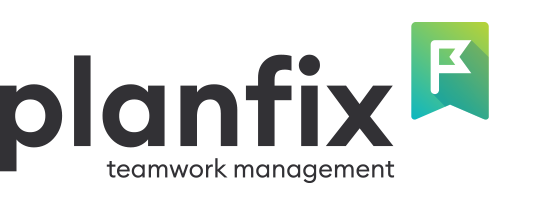
Goodbye to the task case! And farewell to the task discussion, the task event, and the entire concept of a task-something. From now on, these will simply be known as “Deal,” “Discussion,” “Event,” or “Something-Else.”
Our reflections on the Planfix philosophy page have proven prescient. The term “task” turned out to be somewhat ill-suited, as it continued to mislead users and narrow their understanding of this concept.
An event we anticipated years ago has occurred: had we started development of Planfix today, we likely would have chosen a more generic name for this entity. That is precisely what is unfolding now, and we are excited to introduce the universal entity — object.
What is an Object?
Without tying it to Planfix’s terminology, an Object represents the digital twin of a physical entity or process from the real world. However, within the context of Planfix’s framework, an Object is defined as a template comprising a set of fields and a strictly associated process. CRM tool – an Object in Planfix consists of:
- Properties.
- Possible states and the rules governing transitions between them.
- Automations triggered by changes in properties and states.
Specifically, an Object in Planfix includes:
- Fields: These describe the actual characteristics of a physical entity or process. For instance, for a “deal,” this might include the budget. For a “meeting,” it could be the location, and for a “vacation,” the dates and type.
- Set of statuses: These represent the various states an object can assume. For example, in the case of a “deal,” possible states might include negotiations, awaiting contract agreement, or payment.
- Transition rules between states: These determine who has the authority to change the object’s state.
- Automatic scripts: These are triggered by modifications in field values or by pressing buttons that automate a series of actions applicable in certain states.
The Main Challenges of Templates in Planfix
During Planfix’s development, processes were introduced significantly later than templates, with scripts being added even later.
This evolutionary development led to the creation of a “many-to-many” relationship among templates and processes. While this approach offers flexibility, it also introduces complexity in understanding and configuring the system.
Currently, we are observing the following inconveniences:
Template Management Challenges
Templates in Planfix serve concurrent purposes:
- Digital twins of physical CRM objects.
- Project templates or task trees.
- Recurring tasks.
In the latter two scenarios, it becomes excessively cumbersome when each task in a tree or each recurring task is equipped with numerous fields. This complexity escalates maintenance challenges, particularly for large accounts.
Furthermore, adding a field to a template is currently a challenging process. Although bulk changes provide some relief, they do not entirely address the issue of ensuring consistent field addition across all relevant areas.
Navigation Issues
Many users misunderstand the process due to our lack of a proper method for creating digital twins in Planfix. They will add automatic scripts and statuses for different templates into the default process, resulting in a system that is difficult to navigate. It’s also slow, because everything has been consolidated into a monolithic process.
New Users Onboarding
In general, adding new fields to a template is very complex, posing a significant challenge for new Planfix users.
Numerous Fields and Cards Management
When there are many fields, e.g., large accounts, setting filter conditions, or automatic scripts, filter columns and cards in Planfix become complicated. The problem is that the required object must be selected from hundreds of conditions and fields with similar names. For example, let’s look at our account:

Object templates are designed to solve these problems.
How Will the Objects Help Now?
At this stage of development, we are hopeful that the introduction of “Objects” in Planfix will streamline the process of transferring real-world objects into the system and guide users more effectively. In this framework, users will create virtual representations of real-world objects in Planfix, each associated with its own distinct process.
It is important to note the pricing structure for objects, which aligns with our existing process pricing:
- Free — 1 object
- Plan A — 5 objects
- Plan B — 50 objects
- Plan X — 100 objects.
What Will Happen to the Task Templates?
As already mentioned, current templates include:
- Digital twins of physical objects
- Project templates
- Templates for task trees
- Recurring tasks
Upon completion of our updates, CRM objects will replace task templates. Only the following templates will remain in Planfix:
- Projects
- Task trees
- Recurring tasks
Users need not worry about the transition process. It will be smooth and seamless. During the transition phase, existing accounts will still have the ability to create templates not linked to objects. These templates will be compatible with all processes except those related to objects. This approach is designed to ensure backward compatibility and prevent disruption to current workflows.
How Do I Add an Object in Planfix?
At the moment, objects can be found in the “Account Management” section:

When you navigate to an object, a new form appears, which will be familiar to you from the previous note:

Adding a new Object in Planfix automatically creates a process with the same name. This process can be found via “Account management” – “Task processes”:

The options for adding, configuring, and arranging fields remain the same as before. When a new object is added, its corresponding process can also be located through ‘Account management’ — “Task processes.”
Here, users can configure states, transitions, add automation, and buttons for the new object:

What is to Be Expected Next?
Task Lists for Specific Objects
Essentially, this will be the “Tasks” section, but with a filter that only shows tasks related to a single object. This should make things easier:
- You create the object “Deal” and immediately get a separate section where all deals can be found.
- Only the fields contained in the object are available in the column settings.
- In these lists, you can quickly add fields directly to the object.
- Filter settings will only include conditions based on the fields in this object.
We have recently finalized a new form of tasks, more details about the new features: New Form for Creating a Task in Planfix.
Planners for Specific Objects
When creating a planner, you can specify an object and get the same benefits and streamlined features as you have with lists.
Automatic Scripts for Objects
With Planfix recognizing the scenario of an object and its included fields, it will display only the necessary fields of the object in the conditions, rather than all system-added fields. In the “Create task” automatic scenario process, Planfix will suggest only the relevant fields for completion.
Merging Object and Process Settings
The design of the new user interface, which is still in the conceptual and discussion phase, aims to consolidate object settings (fields) and lifecycle elements (state, transitions, and automation) in one place. This way, you don’t have to jump back and forth between different sections of the system to find the right settings.
Summarized
- CRM tool – objects will replace task templates and processes. In the future, we will use the term “template” for projects, task trees, and recurring task templates.
- To better understand objects, you can think of them as different tasks in Planfix.
- There will be no major changes for current users; changes will primarily affect new accounts.
- During the transition, existing accounts will retain the ability to create templates unrelated to objects. These templates will be compatible with all processes except those specifically tied to objects, maintaining backward compatibility.
- The upcoming changes are significant, and their implementation will be gradual and careful to avoid disrupting users’ established project management workflows.
- The introduction of Objects is just the beginning, with the most impactful changes and enhancements for all Planfix users still on the horizon. This blog post outlines only the initial steps of this extensive update.

